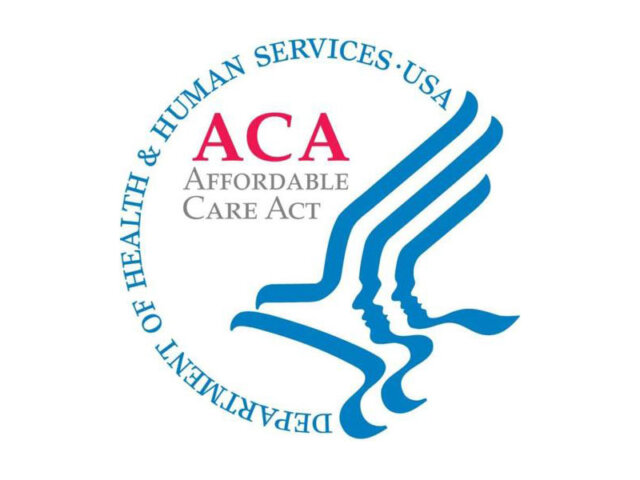
Individual Health Insurance Basics
As the Affordable Care Act legislation continues to drive up the price of health insurance national insurance carriers have significantly limited the plan options they offer and some carriers have left the individual market entirely! In fact, PPO plans in Texas have nearly disappeared from the individual health insurance market. Left with a few high-cost, high-deductible plans with little benefit many people are left wondering what to do.
We Have The Answer!
Non-qualified health insurance plans are the solution for those who are seeking an affordable health insurance plan and do not want or can’t afford a Marketplace Plan. There are health insurance companies offering great non-qualified Texas individual health insurance plans. Non-qualified plans are built like traditional health plans used to be. These plans make it possible to get individual health insurance in Texas for an affordable price even after paying the government-mandated penalty.
Call (855) 980-7596 or (281) 255-4444 or fill in the form to the right.
Health Insurance Plans in Texas
Texas health insurance plans in Texas and the around the country have evolved over the decades as innovations in medical science and prescription drugs have extended the lives of patients and allowed millions of people to access treatment not thought possible just a few decades prior. These advancements in treatment and health care have come with a hefty price tag, however.
In 1974, the federal government enacted the Employee Retirement Security Act (ERISA) which established a predominantly employer based health insurance system in our country. ERISA did not require employers to offer health insurance to their employees, but for those employers who did, they would be required to meet certain standards of care. These group health insurance plans offered by employers would be required to accept employees regardless of their preexisting conditions as well as allow employees to extend their health insurance should separation from work occur. The Consolidated Omnibus Reconciliation Act (COBRA) of 1985 was signed into law by then-President Ronald Reagan to allow employees to extend their group insurance for as much as 36 months after a work separation. Finally, in 1996 The Health Insurance Portability and Accountability Amendment to ERISA was signed into law which prohibits health benefit plans from discriminating against workers based on health status, genetic information, and disabilities. It also required health plans to safeguard workers and individual applicants’ private health information. Another important aspect of this group health insurance market to note was that ERISA allowed health insurance premiums to become pretax for federal income tax purposes. This would mean premiums employers and employees paid for group health benefits would be tax deductible.
Call (855) 980-7596 or (281) 255-4444 or fill in the form to the right.

Most of these reforms signed into law in the 70’s and 80’s would not apply to the individual health insurance marketplace however. Presently about 70% of the United States population receives health insurance through their employer and the other 30% of the populace is either covered under Medicare, Medicaid or by an individual health insurance plan sold through private insurers like BCBS, Cigna, Aetna and the like. Individual health insurance plans would be primarily regulated at the state level as opposed to the federal level prior to the passage of The Affordable Care Act (ACA Obama Care) in 2010. Unlike group insurance plans, individual plans are not pretax for premiums and medical expenses below 10% of one’s adjusted gross income. Between the passage of ERISA and the ACA health insurance law, individual policies were governed by a different set of rules established by the National Association of Insurance Commissioners. Insurers were still allowed to place restrictions on who could purchase an individual policy. This would have a significant impact on the individual health market by allowing insurance companies to screen for risks and deny coverage to individuals who were deemed uninsurable. What’s more, individual policies could even place exclusionary riders for conditions, charge higher premiums to older sicker customers, and cancel insurance contracts if lifetime or annual limitations were exceeded. Additionally, insurers had the ability to charge sick policyholders more than healthy ones with no claims.
The Introduction of Obamacare
Fast forward to 2010 and we see the passage of the Affordable Care Act, otherwise known as Obama Care. This piece of legislation has had the most far-reaching impact on individual health insurance policies sold across the country. ACA attempted to undue the disparity between group insurance plans and individual coverage in terms of access and affordability. Under the ACA premiums and out of pocket expenses would be subsidized for moderate to low-income beneficiaries. Middle to upper-middle-income policyholders would not be eligible for any premium or deductible support. And, for the first time ever, individual companies offering ACA compliant policies would be barred from placing any waiting periods or restrictions for preexisting medical conditions. This legislation by the federal government was unprecedented, and for the first time in our history, individual medical insurance would be guaranteed issue with no waiting periods for preexisting medical conditions.
Guaranteed Issuance
In addition to ACA reforms on guaranteed issuance of individual medical policies, a new series of significant reforms would transform the individual market place. Namely, insurers would be required to charge older individuals no more than 3 times what they charge for young adults age 21; insurers could no longer place lifetime or annual caps on the amount of insurance they would pay for; insurers could no longer rate policies based upon the risk effectively becoming community rated; insurers would be barred from discrimination based on gender and ACA policies would be sold to cover the 10 essential health benefits.
These would include:
- Ambulatory Patient Services(Outpatient Services)
- Emergency Services
- Hospitalization
- Maternity and New Born Care
- Mental Health Care
- Prescription Drugs
- Rehabilitative Care
- Laboratory Services
- Preventative Care including annual exams, mammograms, well woman exams
- Pediatric services including oral and vision care
Metallic Plans
New ACA Major Medical policies would also require insurers to cap out of pocket expenses for the consumer. This would mean in a catastrophic event, the insurance company would be limited to the amount of deductible and coinsurance imposed on the policyholder. And, insurers would be required to offer coverage under a set standard policy design known as “metallic” plans. ACA would now be offered under metallic plans: Bronze, Silver, Gold, and Platinum. Each metallic plan would represent what is known as an actuarial value (AV). For instance, Bronze levels plans would only be required to cover approximately 60% of out of pocket medical expenses through a standard cap of 7300 out of pocket. Silver would be assigned a 70% actuarial value, the Gold plan would be assigned 80% AV, and Platinum plans would be assigned 90% AV. This made shopping for insurance a little easier for the end consumer as these plans all covered the 10 essential health benefits, just at varying degrees of coverage or AV.
Call (855) 980-7596 or (281) 255-4444 or fill in the form to the right.
Health Insurance Exchange
Insurers would now be required to offer plans that meet the AV requirements and cover all 10 essential health benefits. Under ACA, CMS allowed each individual state some latitude in terms of creating an exchange to allow low to moderate income individuals shop for and purchase health insurance. Most states ultimately opted to utilize the federally created portal at: www.healthcare.gov This portal or “exchange” was created to allow consumers to shop for and evaluate their insurance coverage. Not only would consumers be able to shop for plans under one location, but would now have the ability to receive a subsidy for premiums and deductibles based on income and ability to pay. The IRS along with the Department of Treasury would oversee these subsidies and communicate with the marketplace in order to determine eligibility. Effectively, the end consumer would enter personally identifiable information into the healthcare.gov website and the IRS could determine eligibility for tax credits to lower the price of the premiums and deductibles for low-income persons.
Many Mainstream Carriers Exit the Marketplace
The implications of these reforms had a huge impact on the individual health marketplace. For the first time ever, low income individuals with preexisting medical conditions could obtain federally subsidized health insurance with no preexisting waiting periods or exclusions. As a result, millions of individuals signed up for marketplace plans with the official roll out in 2014 and 2015. By 2017 most mainstream insurance carriers in the state of Texas and many other states had exited this market. The few carriers left in this space simply canceled any open access PPO plans and replaced them with HMO networks. Insurance companies could not effectively screen for risk under the new set of ACA guidelines and began losing billions of dollars in this space, forcing cancellations and modifications few could foresee happening before the rollout.
The Unintended Consequences of ACA
Unfortunately, the unintended consequences of the new ACA law had the effect of limiting carrier choices, limiting provider access by forming more restrictive and unavailable HMO networks, and increasing costs prohibitively for middle class working families. The ACA effectively negated the intended outcome of equal access and affordability it was set out to accomplish. In fact, in some 96 counties across the state of Texas, BCBS HMO is the only insurer writing individual medical insurance policies under the ACA. It remains to be seen how many counties across the country will eventually have no insurance carrier willing to write ACA plans, which would be a travesty for millions of families looking for affordable health insurance coverage.
Fixed Indemnity Plans as an Alternative
Fixed indemnity health plans have emerged as a viable alternative to the ACA qualified plans for millions of individuals, quickly becoming an affordable alternative to these high priced HMO ACA policies of today. The fixed indemnity model replaces the traditional health insurance model of ACA plans in a few distinct ways. Whereas the ACA major medical plans are expense based plans, fixed indemnity plans pays a flat dollar amount per covered service or charge. ACA policies sum all expenses under one deductible. If more charges remain above a set deductible, the insurance carrier would then pay a fixed percentage of those charges, leaving the patient responsible for the remaining percentage. For Example:
Suppose one incurs a claim for a surgical procedure and a night in the hospital totaling 10,000.
10,000 Claim under ACA major medical
2000 Deductible with 80/20% Co-Insurance
5000 Maximum out of pocket
Under this scenario, the policyholder would be required to pay 3,600 dollars of the 10,000 medical bill and the insurance company would cover the remaining charges. Once the coinsurance amount reached a total of 3000 then the insurance carrier would pay 100% of remaining insurance approved charges for the remainder of the year upon satisfaction of the deductible and coinsurance through a maximum out of pocket of 5000.
The math works like this:
10,000 Claim
-2,000 Deductible
=8000 remaining balance
The insurance carrier then pays 80% and the patient’s responsibility for the other 20% of the remaining balance
8000 * 20 % = 1600
2000 deductible + 1600 coinsurance amount = 3600 total out of pocket
The fixed indemnity policy model is completely opposite of the ACA major medical model. Instead of the insurance carrier covering 100% of all covered fees, expenses, and charges after the deductible and coinsurance satisfaction, the insurance carrier will pay a flat dollar amount per service rendered. To exemplify this structure, suppose one has the same claim for a surgery with one night hospital stay:
Total Claim 10000
Hospital Charge 6000
Surgical Charge 2250
Anesthesiologist Charges 1750
The fixed indemnity policy would, for example, pay a fixed dollar amount:
Hospital Charge 5000 Daily
Surgical Benefit 1500 Daily
Anesthesia 1250 Daily
Total 8750
In this situation the client could end up paying less than the ACA plan based on the specific services and charges that are rendered. The opposite could hold true as well. In the event the approved charges exceed the fixed dollar amount the insurance carrier were to pay, the client could end up owing money to the provider(s).
Plan Tax Qualifications
Another key distinction between fixed indemnity medical and ACA medical deals with the individual mandate and tax qualification of the two plans. Obama Care implementation required all individuals to purchase a “qualified” health plan with minimum essential coverage or pay a fine. So, these fixed indemnity policies do not “qualify” as ACA and therefore the IRS would impose a fine or tax on these individuals. 2017 was a tumultuous year in the House and Senate in terms of the debate on the fate of Obama Care. The individual mandate was struck down beginning in 2019 by the U.S. House and Senate which was signed by President Trump. This would deal a significant blow to the viability of ACA going forward presumably because healthy individuals, when given the choice, would purchase less expensive indemnity insurance over the ACA policies, further exacerbating the sick pool of people under ACA. One of the major themes of ACA funding was the idea that requiring everyone to sign up for ACA would create a large pool of sick and health people alike, which in theory, would hold premiums down. Now that healthy individuals could exit Obama Care without penalty, ACA premiums would necessarily sky rocket even further because insurers would only be left with the sickest individuals.
HMOs vs. PPOs
Due to the major losses insurers experienced under ACA, most policies either exited the individual market and the ones remaining were forced to form restrictive HMO networks as a way to attempt at containing costs. Unlike ACA, most fixed indemnity policies utilize open access PPO networks instead of HMO networks. These PPO networks enable policy holders to access providers and facilities mot available under the existing Obama Care HMO networks.
Pros and Cons
While affordability and access are certainly positive qualities associated with these fixed indemnity contracts, there are a few draw backs as well. Namely, these plans are fully underwritten and will typically place a waiting period for preexisting medical conditions. For sick people with lots of medical bills, this would mean they’d neither qualify medically nor have all their conditions covered right away. However, for people with few to no preexisting conditions or insurability issues, these policies work quite well and are certainly an affordable option to expensive ACA insurance. Additionally, these plans are typically guaranteed renewable contracts, meaning the insured is guaranteed to renew this insurance up to age 65 when Medicare presumably begins for the policyholder. This valuable feature ensures the policyholder the right to renew their coverage regardless of future claims or medical events occurring in the future after the effective date of coverage.
The High Cost of Health Insurance
Only time will tell the future of individual health insurance in our country. Current and future Administrations will undoubtedly grapple with this heated issue for years to come. And, there are no easy answers when it comes to health care legislation and implementation. If you or someone you know are struggling with the high-end cost of health insurance or would just like to shop plans, please contact our office for a no obligation consultation.
Call (855) 980-7596 or (281) 255-4444 or fill in the form to the right.
Health Insurance Keeps Changing . . .

These plans are booming in popularity right now and we have some great options for you!
Notice About ACA Marketplace Health Plans:
*Due to changes in the insurance industry as a result of Affordable Care Act regulation IHS Insurance Group is no longer able to offer ACA Marketplace Health Plans. Please click below to go to the healthcare.gov website if you care to apply for an ACA Marketplace Health Plan.

International Health Insurance
for expatriates and globally mobile individuals
Cigna Global Health Options helps you create a health insurance plan that’s perfectly tailored for the needs of you and your family by offering you the reassurance of comprehensive core cover, and the flexibility of additional modules to build a plan which fits your needs.
OUR CUSTOMERS CHOOSE US FOR THEIR INTERNATIONAL HEALTH INSURANCE BECAUSE ONLY CIGNA GLOBAL HEALTH OPTIONS GIVES YOU ALL THE FOLLOWING BENEFITS:
- Access to our global network of trusted hospitals, clinics and doctors
- The flexibility to tailor a plan to suit your individual needs
- The convenience and confidence of 24/7 customer care
- The reassurance of our experience in delivering international healthcare
RECENT POSTS
The basics of the Marketplace Health Plans The “ins and outs” of the Marketplace plans made available by the Patient Protection and Affordable Care Act PPACA…
Helping you understand the Affordable Care Act With all of the changes in the insurance industry in the last 5 years understanding the Affordable Care…
New FDA-approved hepatitis C treatment available Those suffering with hepatitis C, a disease which causes life threatening liver damage, now have a new treatment option…



